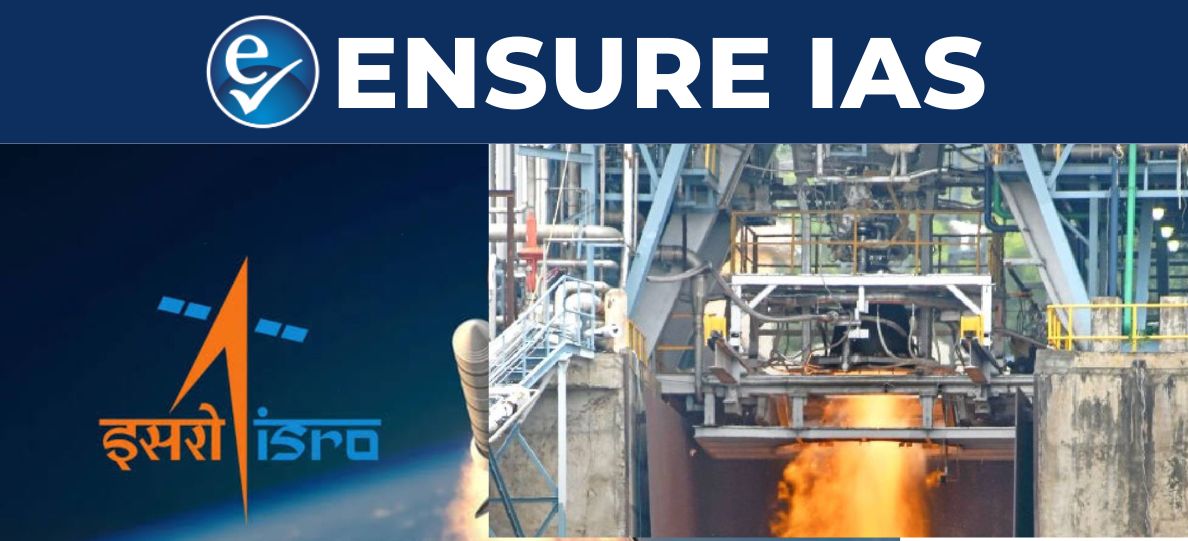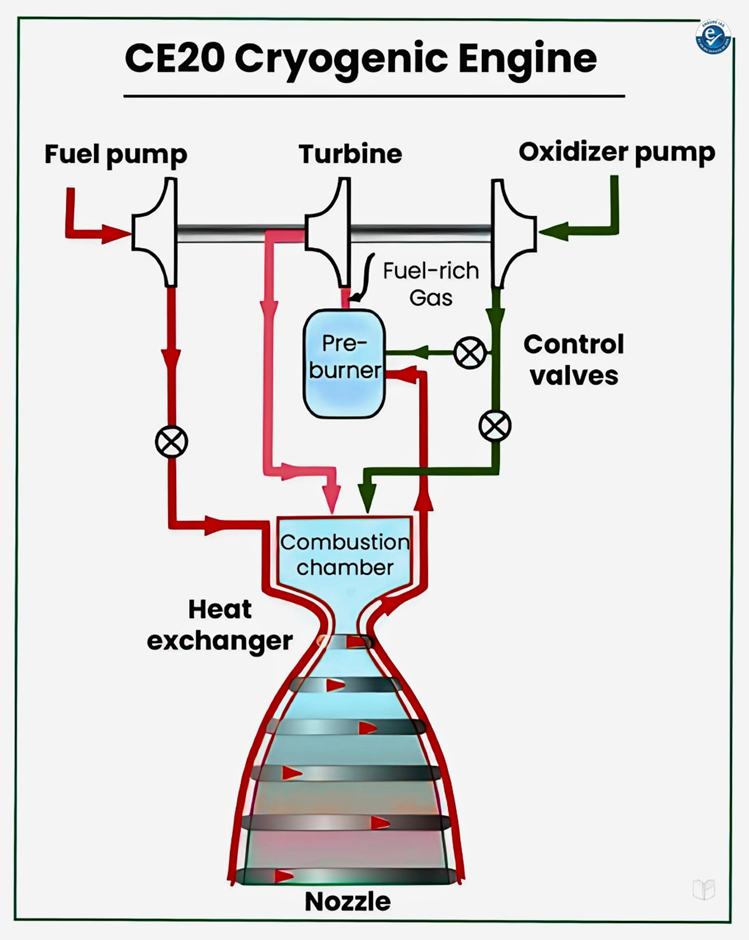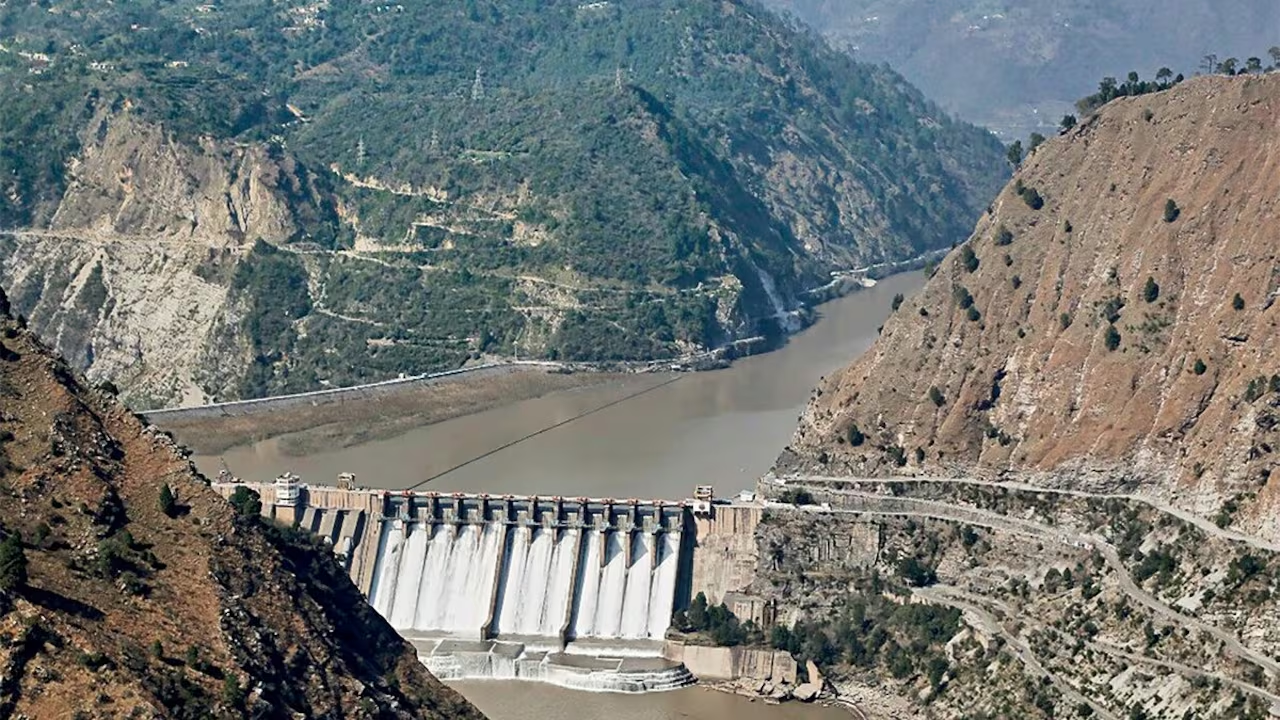- Courses
- GS Full Course 1 Year
- GS Full Course 2 Year
- GS Full Course 3 Year
- GS Full Course Till Selection
- Answer Alpha: Mains 2025 Mentorship
- MEP (Mains Enrichment Programme) Data, Facts
- Essay Target – 150+ Marks
- Online Program
- GS Recorded Course
- Polity
- Geography
- Economy
- Ancient, Medieval and Art & Culture AMAC
- Modern India, Post Independence & World History
- Environment
- Governance
- Science & Technology
- International Relations and Internal Security
- Disaster Management
- Ethics
- NCERT Current Affairs
- Indian Society and Social Issue
- NCERT- Science and Technology
- NCERT - Geography
- NCERT - Ancient History
- NCERT- World History
- NCERT Modern History
- CSAT
- 5 LAYERED ARJUNA Mentorship
- Public Administration Optional
- ABOUT US
- OUR TOPPERS
- TEST SERIES
- FREE STUDY MATERIAL
- VIDEOS
- CONTACT US
CE20 Cryogenic Engine: ISRO’s Propulsion Technology
CE20 Cryogenic Engine: ISRO’s Propulsion Technology

- The Indian Space Research Organisation's (ISRO) CE20 cryogenic engine has passed a critical sea-level test, marking a significant breakthrough in its propulsion technology.
- This advancement is crucial as ISRO prepares for its Gaganyaan mission, India's first manned spaceflight.
Key Highlights of the Test:
- The test was conducted at the ISRO Propulsion Complex in Mahendragiri, Tamil Nadu.
- A key innovation introduced in the sea-level test was the "Nozzle Protection System."
- This system is designed to manage issues such as flow separation within the nozzle, which can cause vibrations, thermal problems, and potential damage.
- The engine’s design also addressed challenges related to engine restart capability.
- In 2023, Hindustan Aeronautics Limited (HAL) set up the Integrated Cryogenic Engine Manufacturing Facility in Bengaluru.

How Does a Cryogenic Engine Work?
A cryogenic engine generates thrust through an internal combustion process, relying on the principle of Newton's Third Law of Motion: "Every action has an equal and opposite reaction." This is achieved by using cryogenic propellants (fuel and oxidizer) that are stored at extremely low temperatures.
- Cryogenic Propellants: These engines use liquefied gases that are kept at very low temperatures. The common cryogenic fuels are:
- Fuel: Liquid hydrogen (LH2) is used, which is liquefied at a temperature of -253°C.
- Oxidizer: Liquid oxygen (LOX) is used, liquefied at -183°C.
Note: A semi-cryogenic engine uses refined kerosene instead of liquid hydrogen. This offers advantages such as lighter weight and storage at normal temperatures.
Advantages of Cryogenic Engines:
1. Efficiency and Thrust:
- Cryogenic propulsion offers superior thrust compared to solid and earth-storable liquid propellants.
- The combination of LOX and LH2 produces maximum energy and light water vapor, resulting in higher performance.
2. Fuel Efficiency:
- Cryogenic engines use less fuel than other systems.
- For instance, ISRO's PSLV Vikas engine burns 3.4 kg of fuel per second, while a cryogenic engine needs only 2 kg/sec for the same thrust.
- The specific impulse (efficiency) of cryogenic engines is about 450 seconds, compared to 260 seconds for solid propellants.
3. Eco-Friendly Technology: The combustion of hydrogen and oxygen produces only water vapor, making cryogenic propulsion a clean, carbon-free solution.
4. Capability for Heavy Payloads and Long Missions: The high efficiency of cryogenic engines makes them ideal for heavy payloads and long-duration space missions, such as ISRO’s Gaganyaan and Chandrayaan missions.
Challenges in Cryogenic Engine Technology:
- Complex Technology: Cryogenic engines are more complex than solid or liquid propellant systems due to the use of extremely low-temperature propellants and the thermal and structural challenges they present.
- Thermal Issues: High thermal gradients and stresses can lead to issues such as cracks in the divergent outer shell, nozzle distortions, and blockages in coolant channels.
- High Operational Pressures: The high pressures in the thrust chamber require superalloys for structural integrity, which can add significant weight to the engine.
- Maintaining Low Temperatures: Balancing system performance with the thermal capabilities of the coolant liners at very low temperatures is a significant challenge.
- High Development Cost: The development of cryogenic engines is costly, as seen in ISRO’s Cryogenic Upper Stage (CUS) project, which had a budget of Rs 300 crore in 1994.
About CE20 Engine:
- Developed by: The Liquid Propulsion Systems Centre (LPSC), Valiamala, Kerala.
- Thrust Output: The CE20 engine has been upgraded to produce a thrust of 20 tonnes, with the capability to generate up to 22 tonnes of thrust for the C32 stage in the future.
- C32 Stage: A heavier variant of the C20 engine, which will replace the lesser-capacity C25 stage.
- Successful Missions: The CE20 engine has successfully operated in six successive LVM3 missions, including the Chandrayaan-2 and Chandrayaan-3 missions, along with two commercial OneWeb missions.
- LVM3 (Geosynchronous Satellite Launch Vehicle Mk III): A three-stage vehicle capable of lifting payloads up to 4000 kg.
Cryogenic Engine Comparison with Other Engines:
|
Characteristic |
Cryogenic Engine |
Jet Engine |
Solid Propellant Engine |
Liquid Propellant Engine |
|
Air Intake |
No intake required |
Air intake required |
Air intake required as oxidizer |
Air intake required as oxidizer |
|
Fuels |
Supercooled Hydrogen and Oxygen |
Jet A-1, kerosene, aviation gasoline |
Composite propellants with metallic powders |
Hydrazine, MMH, UDMH |
|
Fuel Temperature |
Very low |
No low-temperature requirement |
No low-temperature requirement |
No low-temperature requirement |
|
Efficient Working |
Efficient when low-temperature fuel transforms and mixes correctly |
Efficient at supersonic speeds |
Efficient with sufficient oxidizer |
Efficient with sufficient oxidizer |
|
Purpose |
Third/Last stage of rocket |
Used in airplanes |
Used as boosters in liftoff |
Main stage after booster separation |
ISRO is exploring the use of start fuel ampules like Tri-ethyl-aluminum (TEA) and Tri-ethyl-boron (TEB) to improve ignition reliability and engine efficiency, taking cryogenic propulsion technology to the next level.
The CE20 cryogenic engine is a vital step forward in ISRO's propulsion capabilities and is crucial for the success of future space missions, including the ambitious Gaganyaan mission.
|
Also Read |
|
| Public Administration Optional | |
| UPSC Monthly Magazine | Question Answer Practice For UPSC |




